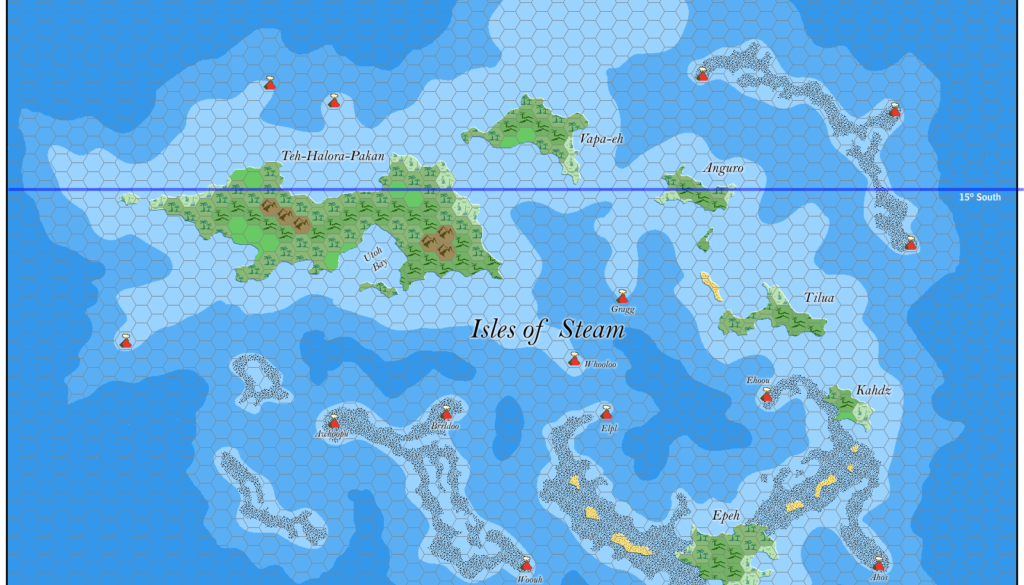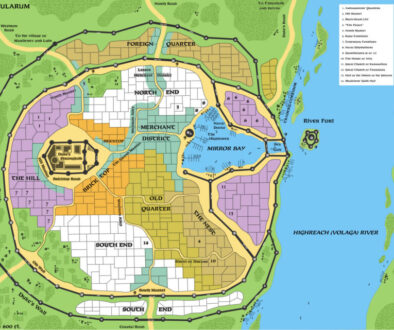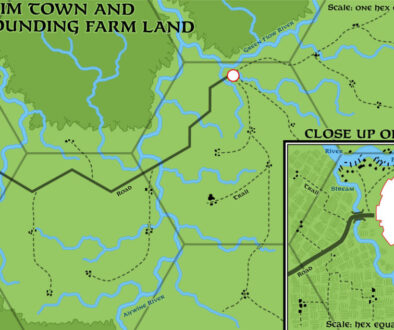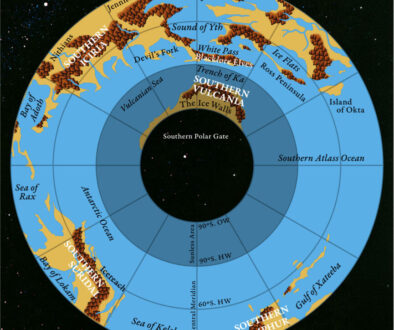Ramelin’s Isles of Steam, 8 miles per hex
November 2015 was a momentous month for Jose’s project, as he finalised more than thirty individual maps over a couple of days. The first set covered most of the Known World, while the second finished that off and then moved west to cover the Serpent Peninsula and the Savage Coast.
Towards the end of the second set, Jose began to branch out further from the Known World, and also to delve more and more into fan creations. His map of Geoff Gander’s Isles of Steam is rather different from how Thibault Sarlat’s 8 mile per hex map envisaged them back in 2003. Although the style of the terrain is similar, the shapes of the islands are more faithful to Geoff’s original designs (for which see Geoff’s Cestia and Oceania, 72 miles per hex). Jose added more detail, as well as a scattering of names for islands and volcanoes.
Fan-made Map by Jose Ignacio Ramos Lomelin (November 2015)
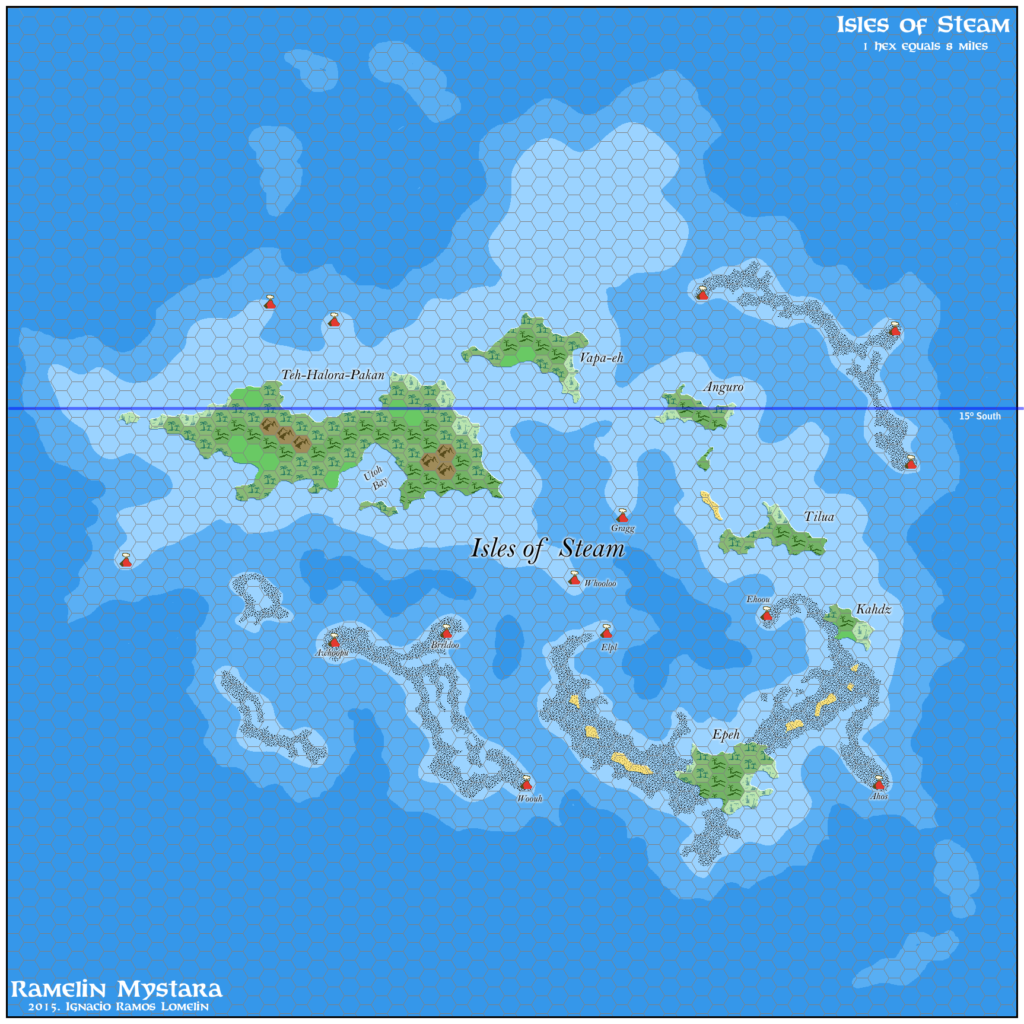
This is an original map created by one of Mystara’s excellent fan cartographers. For more information on the cartographer, including a gallery of all their maps, see also Appendix M: Mappers of Mystara.
Sources
- Geoff’s Cestia and Oceania, 72 miles per hex (1997)
- A description and history for the Isles of Steam (1998) (Vaults of Pandius)
References
- All of Jose’s maps at the Atlas of Mystara
- Jose’s entry in Appendix M: Mappers of Mystara (upcoming)
- Jose’s author page at the Vaults of Pandius
Chronological Analysis
This is a fan-made map. It was published in November 2015. The updated Atlas version of this map is not yet available. See also Appendix C for annual chronological snapshots of the area. For the full context of this map in Mystara’s publication history, see the upcoming Let’s Map Mystara 2015. (Please note that it may be some time before the project reaches this point.)
The following lists are from the Let’s Map Mystara project. Additions are new features, introduced in this map. Revisions are changes to previously-introduced features. Hex Art & Fonts track design elements. Finally, Textual Additions are potential features found in the related text. In most cases, the Atlas adopts these textual additions into updated and chronological maps.
Coming Soon

